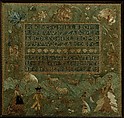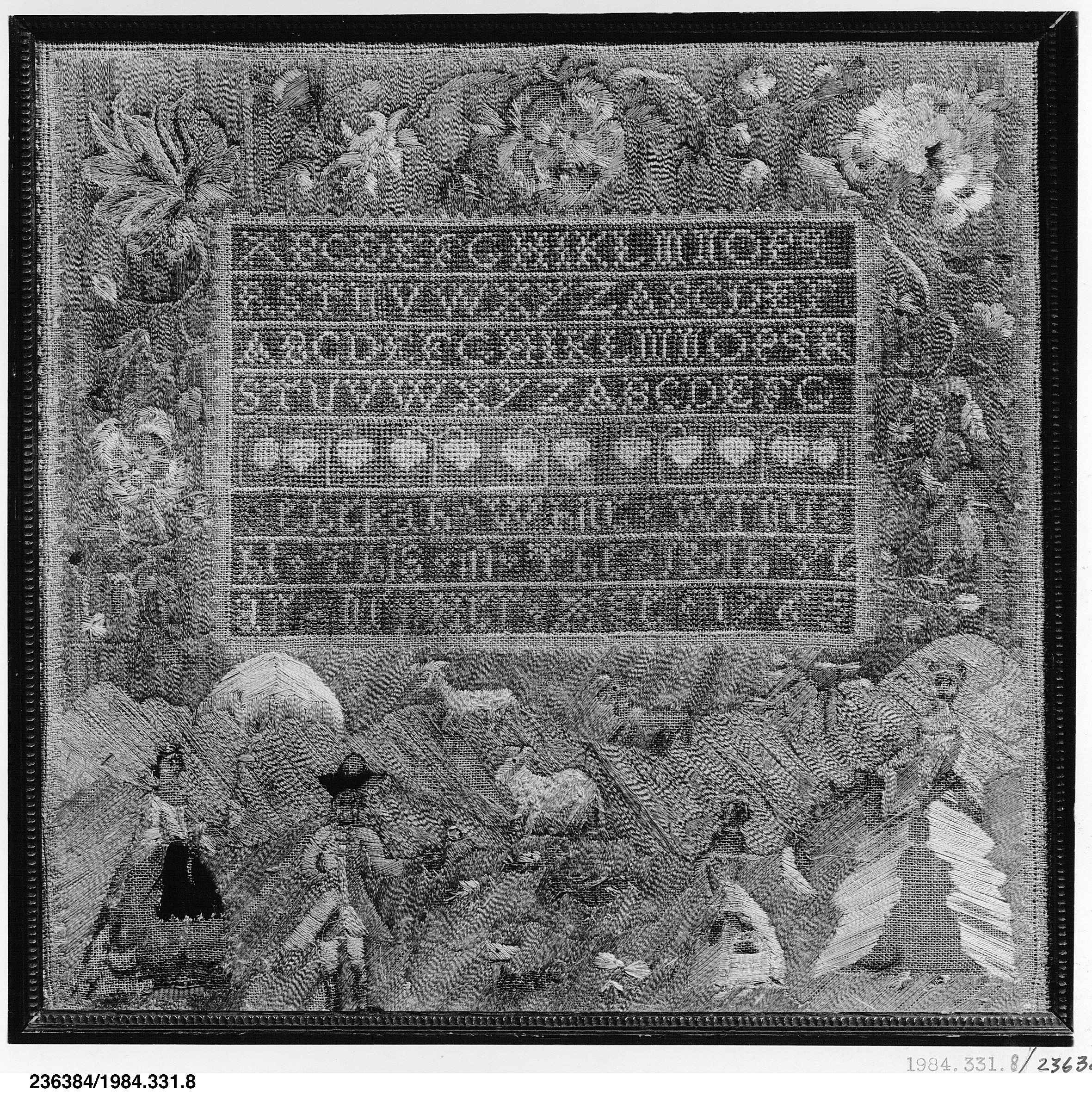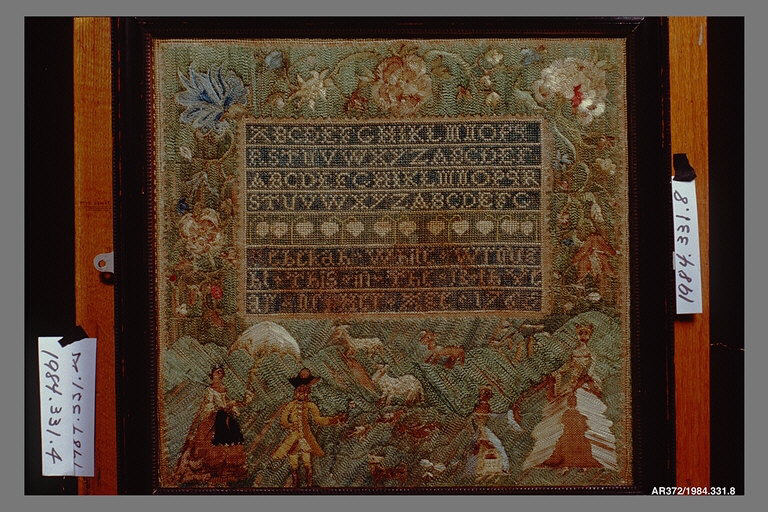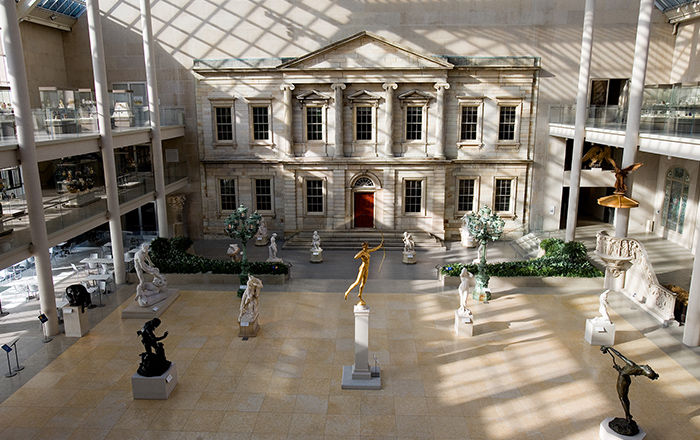Sampler
Rebekah White American
Not on view
The lustrous sheen of this Salem sampler comes from the use of imported twisted Chinese silk threads, which were untwisted and separated to make this luxurious material go further. Salem’s long stitch style is typical of a small group of samplers made under the tutelage of an unknown teacher who likely introduced this technique in the 1740s. It remained popular in Salem into the nineteenth century. Thirteen-year-old Rebekah White used long vertical stitches in the top and sides of her sampler but substituted long diagonal stitches in the base area. The wide floral border with its realistic carnations, tulips, and roses surrounds a central area with two complete and two partial alphabets and the inscription, “Rebekah White Wroug /ht This in The 13th Ye /ar of Her Age 1766.”
The bucolic landscape at the bottom of the sampler features an elegantly dressed woman and child on the right, and the winsome figures of a woman carrying a parasol accompanied by a gentleman in a jacket and high hat on the left. Standing amid grazing sheep and sloping hillocks, these animated figures were likely inspired by illustrations found in books of poetry and songbooks extolling themes of love, courtship and marriage. In the eighteenth century, Americans often considered the countryside as a place of innocence where love could flourish, and many Boston area samplers combine pastoral and romantic imagery to illustrate this notion.
This is one of the earliest samplers to illustrate a woman holding a parasol. A newly fashionable accessory, parasols were advertised in Boston colonial newspapers as “umbrillos” and “umbrellas” to protect against both rain and sun. While attending school in Salem, Rebekah may have been inspired to include the umbrella after seeing the elegant portrait of the Salem resident Mary Toppan Pickman painted by John Singleton Copley in 1763. It features Mary holding a blue umbrella with an ebony handle. (See: Yale University Art Gallery, 1966.79.3).
Rebekah likely grew up in Grafton, Massachusetts, but her parentage remains unknown. The earliest record for her life is her Marriage Intention and wedding when she was 31 years old. In the nineteenth century Marriage Intentions were a custom for the declaration of an upcoming wedding, and on September 5,1819, Rebekah White of Grafton, Massachusetts and Rufus Waite (1788-1871) of Millbury, Massachusetts recorded their Marriage Intention. The couple was married the following month on October 11, 1819, in the Congregational Church that served Sutton and Millbury by Rev. Joseph Goffe (1766-1846). Rebekah and Rufus’s only child, Jonah Waite, was born on July 12,1820. Sadly, Rebekah died three years later on October 2, 1823 in Millbury.
This image cannot be enlarged, viewed at full screen, or downloaded.
This artwork is meant to be viewed from right to left. Scroll left to view more.




